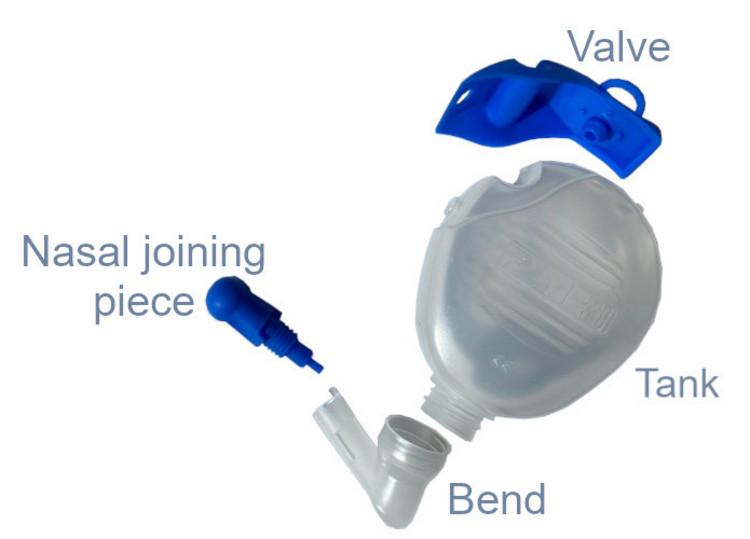A cold caused by a viral infection, sinusitis, pollen or dust allergy, a dry or blocked nose with crusts, polluted air or nasal care following surgery? A nasal douche can help in all of these cases. We will show you how to use a nasal douche properly, with tips on nasal care.

How to use the PARI Montesol nasal douche.
Wash your hands to remove germs such as bacteria and viruses.
Note: If you have just had nasal surgery or you are very susceptible to infections, it is recommended that you use boiled and cooled drinking water.
Hold the nasal douche in your left hand to irrigate your left nostril. To irrigate your right nostril, hold it in your right hand.


Directly after each nasal rinse you have to clean the nasal douche to avoid infestation with germs.
Empty any remaining liquid out of the nasal douche. Dismantle the nasal douche into its individual parts. Place all parts in warm drinking water with washing-up liquid (1 teaspoon of washing-up liquid to 3 litres of water), swirl the parts and rinse for about 5 minutes with clear water. You can also clean the dismantled nasal douche in the dishwasher. Disinfect the nasal douche once a day in the vaporiser or by boiling. Vigorously shake off any water and allow the parts to completely dry.



We have addressed the FAQs on using a nasal douche and the PARI Montesol nasal rinse.
The PARI Montesol nasal douche can be used by children from the age of 7. Children aged 4 years and older should only use a nasal shower after consulting a healthcare professional.
A nasal douche is recommended in the following situations:
If you have a blocked nose, start the nasal rinsing in the blocked nostril. Otherwise it does not matter which nostril you irrigate first.
If you get liquid in your throat, you have to bend your head further down. The liquid can then flow out of your throat and into your mouth. If you get a lot of liquid in your throat, open your mouth as wide as you can.
Water in the throat, nosebleeds or a burning sensation when you rinse your nose? These side effects usually only occur if you use the nasal douche incorrectly. Here we show you which application errors can lead to side effects when using a nasal douche and how you can easily avoid them.
Do not use a nasal douche in the following situations:
The PARI Montesol nasal douche should be replaced with a new product after about 300 disinfections, or 300 to 900 uses, or after max. one and a half years. Also note that you should not share the nasal douche with anyone else. Each person should have their own.
If you often have problems with your nose, it is important that you see your doctor to look into why.
Note: The information in this blog post is not a treatment recommendation. The needs of patients vary greatly from person to person. The treatment approaches presented should be viewed only as examples. PARI recommends that patients always consult with their physician or physiotherapist first.
An article written by the PARI BLOG editorial team.
© 2025 PARI GmbH Spezialisten für effektive Inhalation